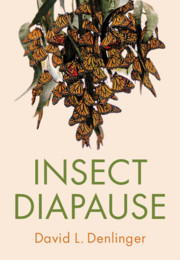Book contents
- Insect Diapause
- Insect Diapause
- Copyright page
- Dedication
- Contents
- Preface
- 1 Confronting the Challenges of a Seasonal Environment
- 2 Which Seasons Are Being Avoided?
- 3 Variation in the Diapause Response
- 4 The Cost of Diapause and Some Diapause Alternatives
- 5 Interpreting Seasonal Cues to Program Diapause Entry
- 6 Preparing for Diapause
- 7 The Diapause State
- 8 Ending Diapause and Reinitiating Development
- 9 Molecular Signaling Pathways that Regulate Diapause
- 10 Genetic Control of Diapause
- 11 Evolution of Diapause
- 12 Wider Implications
- References
- Species Index
- Subject Index
- Plate Section (PDF Only)
2 - Which Seasons Are Being Avoided?
Published online by Cambridge University Press: 13 January 2022
- Insect Diapause
- Insect Diapause
- Copyright page
- Dedication
- Contents
- Preface
- 1 Confronting the Challenges of a Seasonal Environment
- 2 Which Seasons Are Being Avoided?
- 3 Variation in the Diapause Response
- 4 The Cost of Diapause and Some Diapause Alternatives
- 5 Interpreting Seasonal Cues to Program Diapause Entry
- 6 Preparing for Diapause
- 7 The Diapause State
- 8 Ending Diapause and Reinitiating Development
- 9 Molecular Signaling Pathways that Regulate Diapause
- 10 Genetic Control of Diapause
- 11 Evolution of Diapause
- 12 Wider Implications
- References
- Species Index
- Subject Index
- Plate Section (PDF Only)
Summary
This chapter identifies seasons that are avoided by entry into diapause. The best documented studies on diapause examine overwintering in temperate latitudes. Most overwintering insects enter diapause in early autumn in response to the shortening daylengths that reliably foretell the advent of winter. But summer diapauses are also quite common, especially as a mechanism for synchronizing activity with seasonally restricted food sources. Daylength may regulate summer diapause, but instead of short days, the long days of early summer frequently are used to program such a diapause. Diapause is also widespread among tropical species, especially for bridging dry seasons. Near the equator, the role of daylength may be replaced by cues provided by host plants, moisture levels, or temperature changes. Insects living at high latitudes also rely on diapause, but the fact that multiple years may be required to complete development means that diapause may intercede several times during the life cycle.
- Type
- Chapter
- Information
- Insect Diapause , pp. 19 - 31Publisher: Cambridge University PressPrint publication year: 2022

